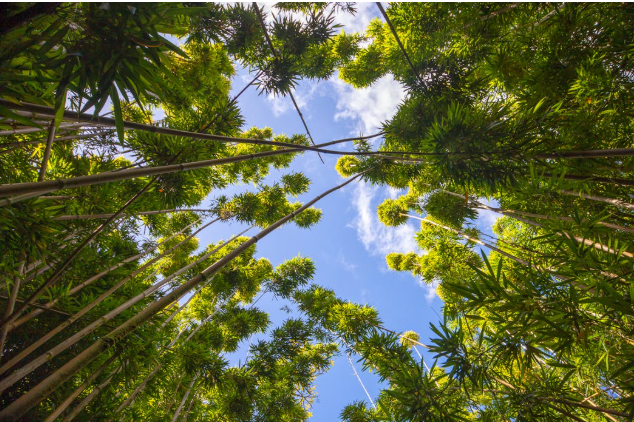
World Bamboo Day 2025: Celebrating Green Gold for a Greener Future
World Bamboo Day is celebrated globally on September 18 every year to highlight the immense value of bamboo—an incredibly fast-growing, renewable resource that supports both people and the planet. This annual celebration shines a light on bamboo’s environmental, economic, and cultural significance in communities worldwide.
Theme for World Bamboo Day 2025:
“Next Generation Bamboo: Solution, Innovation, and Design”
The 2025 theme focuses on the future of bamboo—how it can be integrated into cutting-edge sustainable solutions, inspire design innovation, and drive forward-thinking climate-resilient development. It’s a call to action for scientists, architects, entrepreneurs, and communities to explore how bamboo can solve modern challenges while preserving traditional wisdom.
Why Bamboo Deserves Global Recognition
Often called “Green Gold”, bamboo is one of the fastest-growing plants in the world, with over 1,500 species found across continents. It holds incredible potential to restore ecosystems, empower rural economies, and combat climate change.
Environmental Benefits:
- Absorbs up to 35% more CO₂ than trees, contributing significantly to carbon sequestration.
- Releases more oxygen into the atmosphere than many hardwood trees.
- Prevents soil erosion with its fibrous root system and enhances water retention in degraded lands.
- Thrives without pesticides or fertilizers, making it naturally eco-friendly.
Economic and Livelihood Impact:
- Supports millions of livelihoods, especially in Asia, Africa, and Latin America.
- Used in 1,500+ applications—from furniture and housing to textiles, food, and crafts.
- Drives rural entrepreneurship through handmade bamboo products, fashion, and green tech.
Bamboo: A Lifeline for Rural Livelihoods
In countries like India, bamboo is far more than a plant—it is a source of income, food, culture, and resilience.
For Farmers:
- Quick returns: Harvestable in 3–5 years, unlike timber which takes 15–20 years.
- Low investment: Requires minimal water, grows on degraded land, and regenerates naturally.
- Diverse revenue: Farmers can sell bamboo poles, shoots, or even lease land for cultivation.
For Artisans & MSMEs:
- Bamboo crafts, mats, furniture, and jewelry provide sustainable livelihoods, especially for women.
- Bamboo-based eco-friendly products (like straws, brushes, and packaging) are seeing rising demand globally.
For Startups & Industries:
Green building materials made from bamboo are being used in modular homes, disaster relief shelters, and even carbon-negative construction.
Bamboo fabric is an emerging trend in sustainable fashion—soft, breathable, and biodegradable.
India’s Bamboo Movement: Leading with Legacy and Innovation
India has the world’s largest area under bamboo cultivation (~13.96 million hectares) and is home to 136 species of bamboo.
Major Initiatives:
National Bamboo Mission (NBM): Supports bamboo-based rural industries and promotes value-chain development.
MSP for Bamboo: Ensures tribal and forest-dwelling communities get fair prices.
Amendment to Indian Forest Act: Bamboo is no longer classified as a tree—allowing easier cultivation and transport.
Bamboo Clusters: Established in states like Odisha, Tripura, Nagaland, and Maharashtra to boost artisan economies.
Global Impact: Bamboo as a Climate Hero
With climate change worsening, bamboo is increasingly being recognized for its climate-resilient properties:
- Sequesters large amounts of carbon
- Helps restore degraded ecosystems
- Acts as a natural air conditioner, lowering surrounding temperatures
- Can be used to create biofuels, reducing fossil fuel dependency
How World Bamboo Day is Celebrated
Each year on September 18, countries celebrate with:
- Tree-planting drives to expand bamboo cultivation
- Workshops and exhibitions promoting bamboo products
- Campaigns and seminars on bamboo’s benefits in architecture, health, and agriculture
- Support for local artisans and bamboo startups
This year, under the theme “Next Generation Bamboo: Solution, Innovation, and Design”, special focus is being given to:
- Youth innovation in bamboo startups
- Integrating bamboo in green architecture
- Promoting sustainable product design
Did You Know? Fascinating Bamboo Facts
Bamboo grows up to 3 feet in 24 hours—making it the fastest-growing plant on Earth.
- It emits 35% more oxygen than trees.
- Only 42 species of bamboo are eaten by pandas—out of 1,500+ species.
- Bamboo shoots are rich in fiber, amino acids, and antioxidants—a superfood in many Asian diets.
- Bamboo was used in Thomas Edison’s first working lightbulb filament.
- It was one of the first plants to regrow after the Hiroshima atomic bomb explosion.
The Road Ahead: Why Bamboo Is the Future
Bamboo represents the perfect blend of tradition and innovation. It holds the promise of building a sustainable future where climate action, economic empowerment, and design thinking go hand in hand.
What You Can Do:
- Support bamboo-based businesses and artisans
- Choose bamboo alternatives to single-use plastics
- Advocate for bamboo planting in your community
- Explore bamboo innovations in fashion, building, and lifestyle
Bamboo Is More Than Just a Plant
Bamboo is a symbol of hope, resilience, and regeneration. It has the power to transform economies, heal the planet, and inspire innovation. As we look to the future, bamboo offers real solutions for a sustainable and inclusive world.
Let’s make World Bamboo Day 2025 a turning point—toward a greener, fairer, and more creative future powered by the possibilities of bamboo.

